Graphic Ethnography: The Trouble with Typologies
From the Series: Graphic Ethnography on the Rise
From the Series: Graphic Ethnography on the Rise

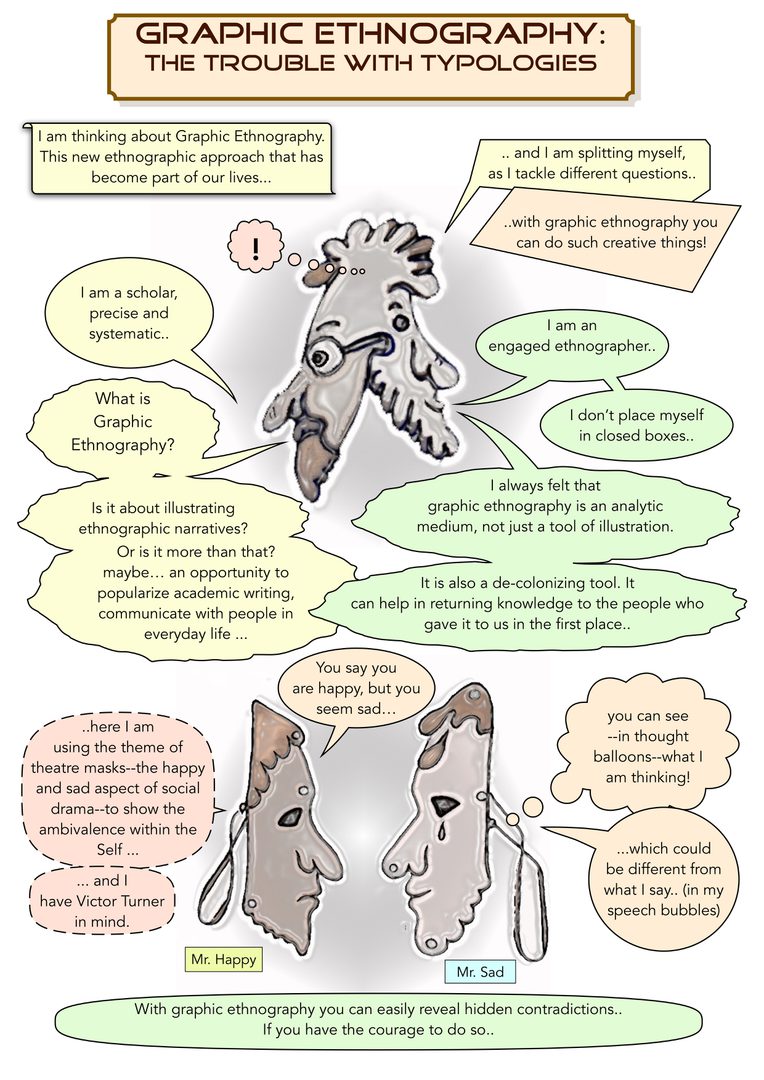
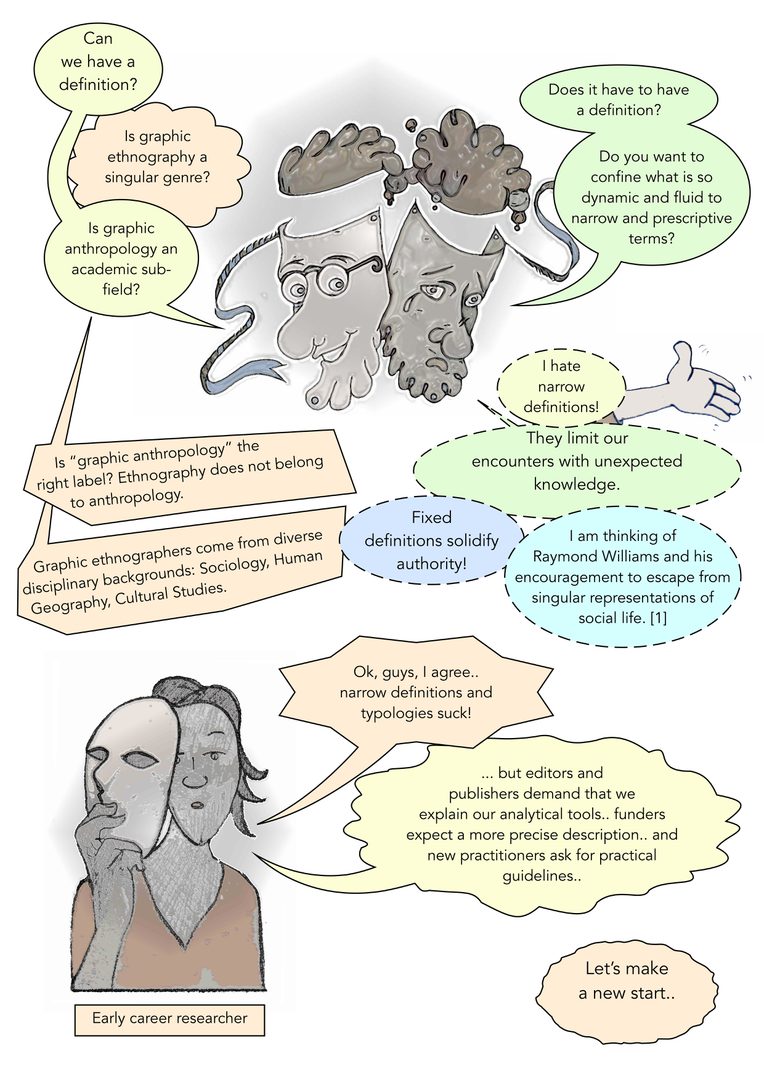
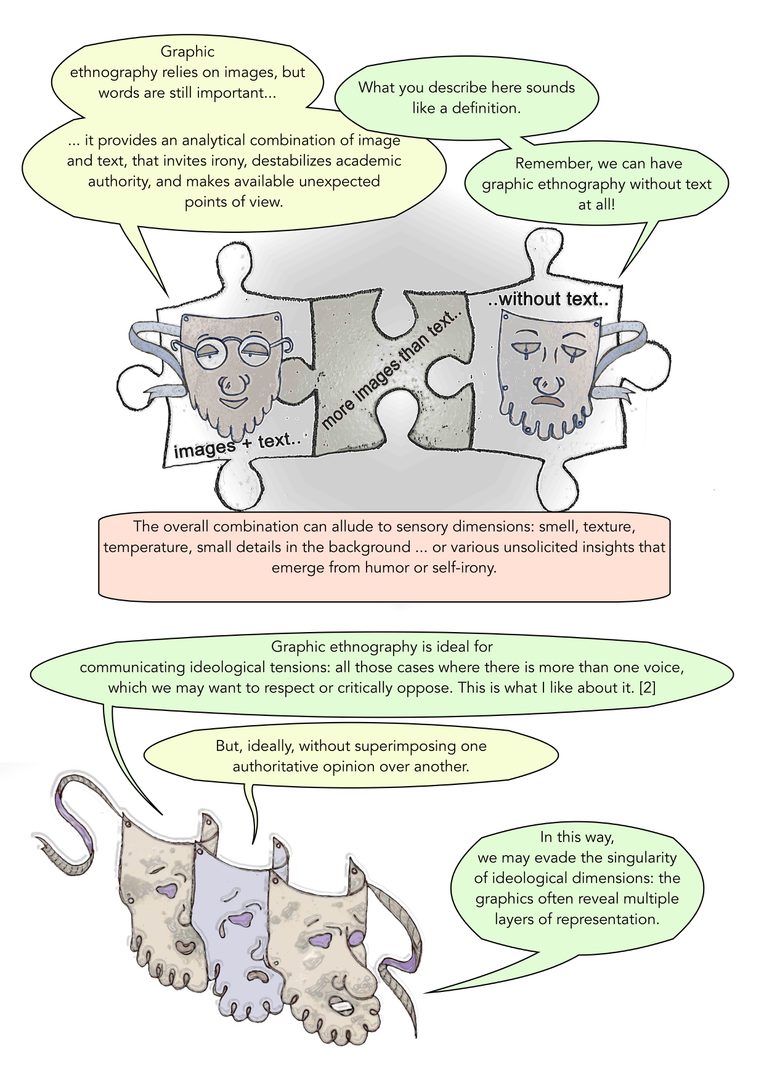

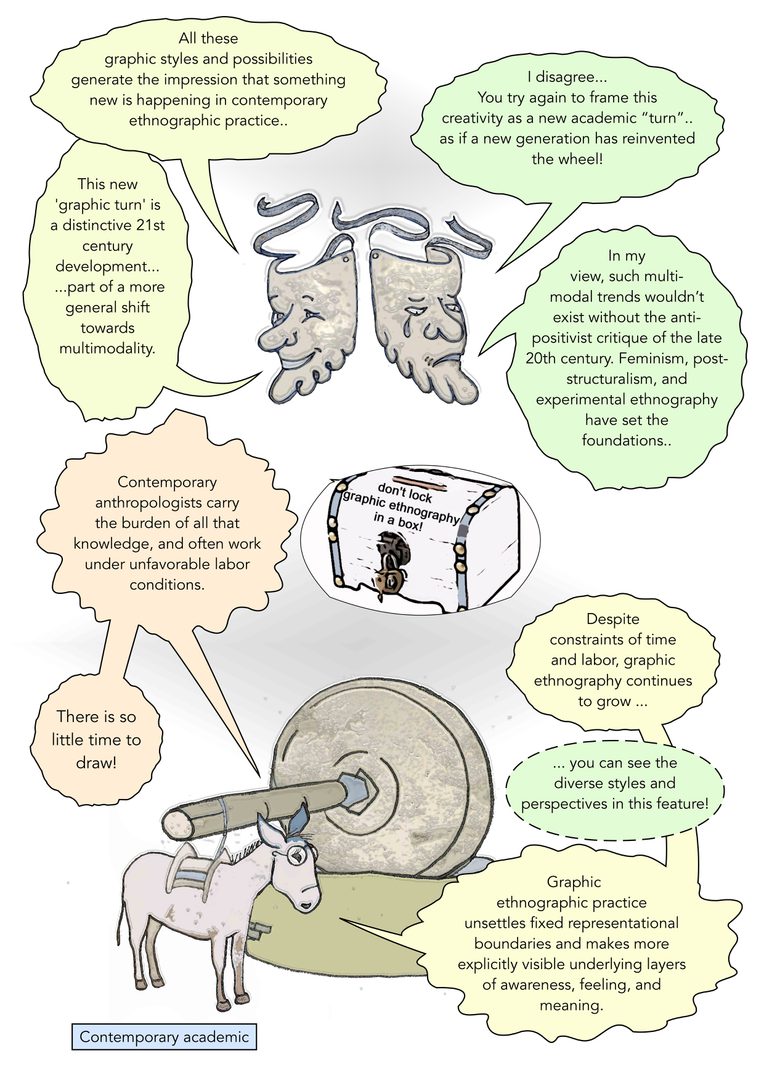
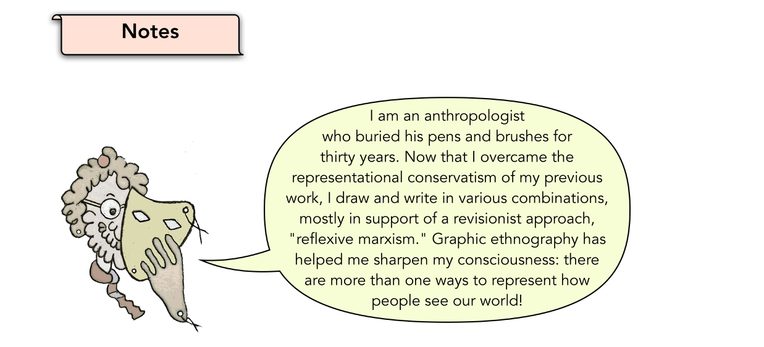
[1] Williams encouraged us to avoid singular and closed academic narratives, a point he made before the corresponding anthropological critique of the 1980s; see Williams 1977.
[2] Our ethnographic interlocutors are often in doubt about their own views. I have found the graphic approach very helpful in capturing their ambivalent stance, or even ideological conflicts, but in a manner that does not single out conflicting views in mutually excluding terms; see Theodossopoulos 2020a, 2020b.
[3] University of Toronto Press has dedicated a book series to full-length 'ethnoGRAPHIC' monographs. See: Lissa (Hamdy and Nye 2017), The King of Bangkok (Sopranzetti et al. 2019), Light in Dark Times (Waterston 2020), and Gringo Love (Carrier-Moisa 2020). See also: graphic books that divert from the sequential graphic novel format: Things that Art (Jain 2019) and The Inheritance (Povinelli 2021).
[4] There is great variety of “shorter” graphic outputs. Some of them popularize the content of academic articles and books. One of my favorite examples is a graphic that outlines Imogen Tyler’s critique of Erving Goffman; see Bailey and Tyler 2018. There are also recent graphic interventions that popularize abstract academic concepts in a format that can be read by local populations—such as the indigenous interlocutors, the people that generate the knowledge (or ideas) captured by ethnography; see Theodossopoulos 2019 and Mookherjee and Keya 2019.
[5] I refer here to a research project during which I emulated the representational style of a political cartoonist who exposed social inequality in the 1950s and 1960s. I drew like him (and recycled his cartoon-characters) to introduce an ethnographic comparison with austerity in the present time; see Theodossopoulos 2022.
Bailey, Charlotte, and Imogen Tyler. 2018. "From Stigma Power to Black Power." Graphic Essay.
Carrier-Moisa, Marie-Eve. 2020. Gringo Love: Stories of Sex Tourism in Brazil. Adapted by William Flynn; illustrated by Débora Santos. Toronto: University of Toronto Press.
Hamdy, Sherine, and Coleman Nye. 2017. Lissa: A Story about Medical Promise, Friendship, and Revolution. Illustrated by Caroline Brewer and Sarula Bao. Toronto: University of Toronto Press.
Jain, Lochlann. 2019. Things That Art. Toronto: University of Toronto Press.
Mookherjee, Nayanika, and Najmunnahar Keya. 2019. Birangona: Towards Ethical Testimonies of Sexual Violence during Conflict. Durham, U.K.: University of Durham.
Povinelli, Elizabeth. 2021. The Inheritance. Durham, N.C.: Duke University Press.
Sopranzetti, Claudio, Sara Fabbri, and Chiara Natalucci. 2019. The King of Bangkok. Toronto: University of Toronto Press.
Theodossopoulos, Dimitrios. 2019. “A Vision for Emberá Tourism.” entanglements: Experiments in Multimodal Ethnography 2, no. 2: 7–26.
Theodossopoulos, Dimitrios. 2020a. "Solidarity Dilemmas in Times of Austerity." Cultural Anthropology 35, no. 1: 134–166.
Theodossopoulos, Dimitrios. 2020b. “Iphigenia’s Sacrifice: Generational Historicity as a Structure of Feeling in Times of Austerity.” The Journal of Royal Anthropological Institute 26, no. 4: 842–863.
Theodossopoulos, Dimitrios. 2022. “Collaborative Experiments in Graphic Ethnography: Emulating Political Cartooning.” Trajectoria Vol. 3.
Waterston, Alisse. 2020. Light in Dark Times: The Human Search for Meaning. Illustrated by Charlotte Cordon. Toronto: University of Toronto Press.
Williams, Raymond. 1977. Marxism and Literature. Oxford: Oxford University Press.